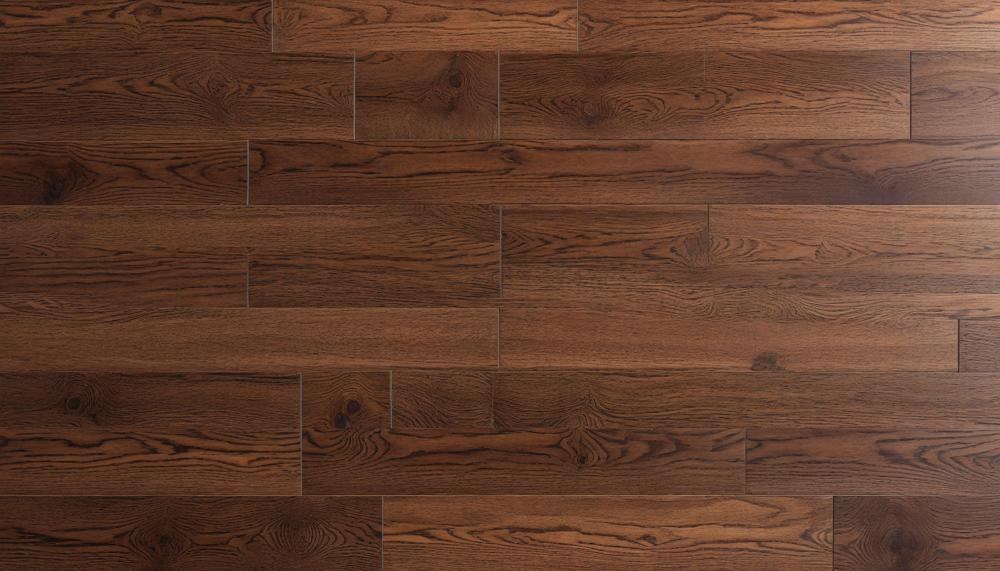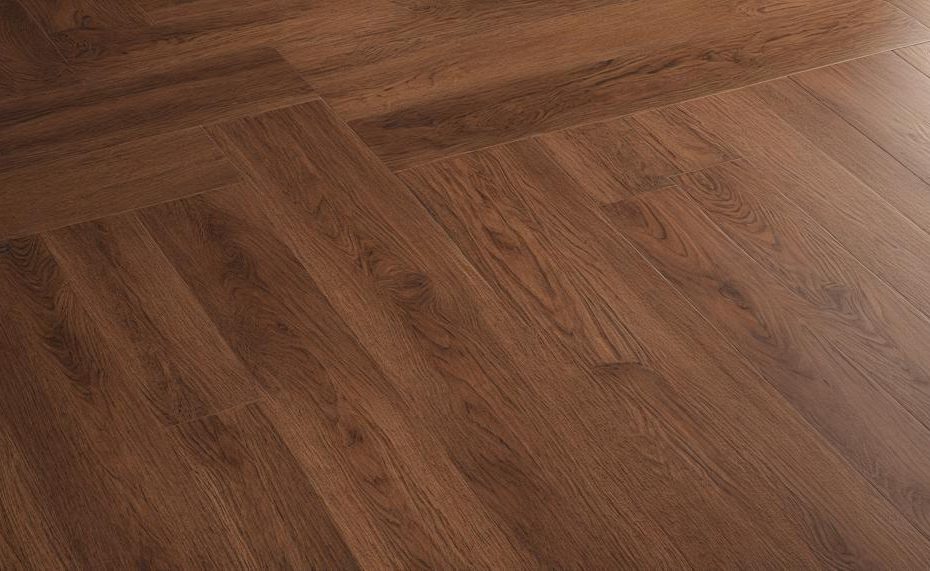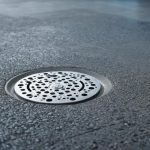Looking to change the color of your hardwood floors without the mess and hassle of sanding? Good news—it’s entirely possible. Whether you’re seeking to refresh your home’s aesthetic or cover up years of wear, recoating your hardwood floors can achieve a stunning transformation with far less effort. Here’s the essence of what you need to know:
- Less Mess: Sanding is messy and time-consuming. Recoating skips the dust and disruption.
- Cost-Effective: Save money on expensive sanding equipment and professional services.
- Time-Saving: Recoating takes significantly less time, getting your floors ready to enjoy sooner.
- Durable Results: With proper preparation and techniques, a recoat can provide a long-lasting, beautiful finish.
In this guide, you’ll discover how to prepare your floors, choose the right products, and apply a new coat to achieve a professional finish. Carpenter Matt Hagens’ expert advice will lead you through each step, ensuring you get the best results without the headache of sanding. Dive in to learn how to breathe new life into your floors effortlessly.
Contents
Cleaning Up Before Changing Hardwood Floor Color
Cleaning hardwood floors before changing their color without sanding is pivotal to achieving a stunning, even finish. Here’s a detailed guide to ensure your floors are pristine and ready for their makeover:
| Step | Description | Details |
| Remove Furniture and Rugs | Clear the room | Ensures full access to the floor and prevents damage to items |
| Sweep or Vacuum | Eliminate loose dirt and debris | Use a soft-bristled broom or appropriate vacuum attachment to avoid scratching |
| Apply Hardwood Floor Cleaner | Mop the floor | Use a cleaner designed for hardwood; spot clean with a microfiber cloth as needed |
| Dry the Floor Thoroughly | Remove any moisture | Use a clean cloth or towel to ensure the floor is completely dry |
| Prepare for Coloring | Remove finishes or apply stain | Use chemical stripping solutions or test and apply colored stains evenly |
By meticulously following these steps, you can ensure your hardwood floors are spotless and prepared for a fresh new colour, all without the need for sanding.
How To Change Hardwood Floor Color Without Sanding?
There are several methods to change the color of hardwood floors without sanding, preserving their natural beauty while saving time and effort. Here are some effective techniques:
Recoating with a Tinted Polyurethane
Apply a coat of tinted polyurethane to enhance or change the existing color. This method requires thorough cleaning and light scuffing of the surface for better adhesion.
Using Wood Stain
Clean and lightly abrade the surface. Apply a new wood stain to the existing finish. Ensure the surface is free from dirt and debris for an even application.
Wood Bleaching
Apply a wood bleach to lighten the floor’s color. This method works best on light wood species and requires proper ventilation and safety precautions.
Colored Wood Waxes
Apply colored waxes for a temporary color change. This option is ideal for those wanting to experiment with different hues without a long-term commitment.
Acrylic Paint
Use acrylic paint for a more vibrant and opaque finish. This technique is suitable for artistic designs or bold color changes but may mask the wood grain.
Whitewashing
Create a whitewashed effect by diluting white paint with water and applying it to the floor. This method lightens the wood while allowing the grain to show through.
How To Change Hardwood Floor Color By Sanding And Refinishing?
Changing the color of hardwood floors without sanding and refinishing is possible by following these detailed steps:
Preparation
- Clean Thoroughly: Sweep, vacuum, and mop the floor to remove dirt, dust, and debris. Use a gentle wood cleaner for a deep clean.
- Repair Damages: Fill in scratches and holes with wood filler. Ensure the floor is smooth and even.
Choosing and Testing the Stain
- Select Stain Color: Pick a wood stain in your desired shade.
- Test the Stain: Apply the stain on a small, hidden area to confirm the color.
Applying the Stain
- Application: Use a brush or rag to apply the stain, following the wood grain.
- First Coat: Apply the first coat evenly and allow it to dry completely.
- Second Coat: If needed, apply a second coat for a deeper color and let it dry.
Sealing the Stain
- Polyurethane Finish: Apply a protective polyurethane finish with a brush or roller.
- Drying Time: Follow the manufacturer’s instructions for drying times.
Maintenance
- Regular Cleaning: Keep the floors clean with regular sweeping and gentle mopping.
- Protective Measures: Use furniture pads to prevent scratches and avoid excessive water exposure.
How To Change Hardwood Floor Color By Whitewashing?
Changing the color of hardwood floors without sanding using a whitewashing technique involves a few precise steps. Follow this guide to achieve a fresh, updated look for your floors.
Cleaning the Floor
Start by thoroughly cleaning the floor. Use a vacuum to remove dust and debris, followed by a damp mop. Ensure the surface is completely dry before proceeding.
Scuffing the Surface
Use brass wool to scuff up the hardwood floor. This helps to remove the existing finish and provides a rough surface for the whitewash to adhere to. Be sure to scuff evenly across the entire floor.
Applying the Whitewash
Prepare a mixture of white latex paint and water in a 2:1 ratio. Test the mixture on a small, inconspicuous area first to ensure you achieve the desired opacity.
Using a paintbrush or a rag, apply the whitewash mixture to the floor in small sections, working with the grain of the wood. Wipe off excess paint with a clean cloth to control the level of whiteness.
Drying Time
Allow the whitewash to dry completely. This may take several hours or overnight, depending on the humidity and temperature in the room.

Applying a Protective Finish
Once the whitewash is dry, apply a coat of water-based polyurethane to protect the floor and give it a polished look. Use a high-quality brush or roller for an even application.
Let the finish dry according to the manufacturer’s instructions before moving furniture back into the room.
Care and Maintenance of Colored Hardwood Floors
Refinishing colored hardwood floors should be done every seven to ten years to maintain their color and shine. This frequency helps preserve the wood’s integrity and keeps the finish looking vibrant.
Explanation
Refinishing frequency can depend on various factors such as the amount of foot traffic, exposure to sunlight, and the type of finish used. Regular maintenance, like sweeping and using appropriate cleaning products, can extend the period between refinishing. Here’s a detailed breakdown to help you understand the factors better:
| Factors | Impact on Refinishing Frequency | Recommendations |
| Foot Traffic | High foot traffic areas may require more frequent refinishing. | Consider refinishing high-traffic areas every 5-7 years. |
| Sunlight Exposure | Prolonged exposure to sunlight can cause fading and discoloration. | Use rugs or curtains to protect floors from direct sunlight. |
| Type of Finish | Some finishes last longer than others. For example, polyurethane finishes are more durable. | Opt for high-quality finishes and follow the manufacturer’s maintenance guidelines. |
Conclusion
Transforming the color of your hardwood floors without sanding is not only possible but also practical and rewarding. By opting for recoating, you avoid the mess, expense, and time-consuming nature of sanding, while achieving a fresh, vibrant look for your home.
Start by meticulously cleaning your floors. This involves removing all furniture, sweeping or vacuuming away loose dirt, and using a specialized hardwood floor cleaner. Ensuring the floor is dry and free of debris is crucial for a smooth finish.
Next, consider your color-changing options: recoating with a tinted polyurethane, applying a wood stain, or using wood bleaching. Each method has its own benefits. Tinted polyurethane offers a subtle change with added protection, while wood stain provides a deeper color shift. Wood bleaching is perfect for those looking to lighten their floors, though it requires careful handling and safety precautions.
For a more experimental touch, colored wood waxes or acrylic paint can offer temporary or bold transformations, respectively. Alternatively, whitewashing can create a chic, rustic effect, maintaining the wood grain while giving it a fresh, lighter look.





